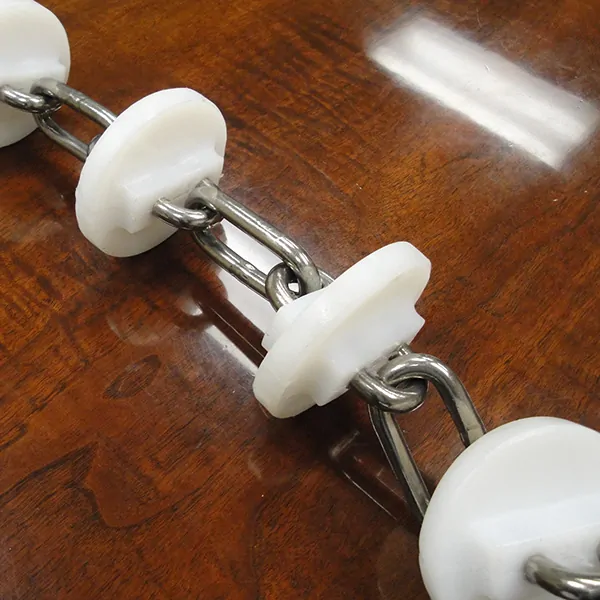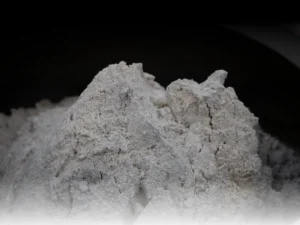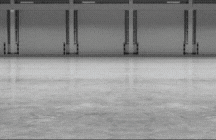What are the materials best conveyed by drag chain conveyors? Running the proper materials decreases downtime and increases productivity because the conveyor is operating at its full potential. We’ll talk more about that in this blog.
There are two types of drag chain conveyors out there – structural and non-structural. At Spiroflow, we manufacture both. In order to keep things simple, we will only talk about heavy-duty non-structural drag chain conveyors such as our Chainflow conveyor. We talk about ultra-heavy-duty structural drag conveyors in other posts.
What is a Drag Chain Conveyor?
A tubular drag chain conveyor is a heavy-duty conveyor belt system because it is designed to run 24/7/365. Tubes and discs are made of stainless steel with UHMWPE discs. Multiple inlets and outlets are possible for this machine. An automatic chain tensioner is always included. Other basic components of a drag chain conveyor include a 90˚ idler housing, chain vibrator, pneumatic inlet baffle, static grounding, sight glass, and controls.
Drag Chain Conveyor Options
Like most mechanical conveyor solutions, there are a variety of drag chain conveyor design features to choose from. Reputable conveyor manufacturers can make drag chain conveyor recommendations based on your application requirements and budget. Here are the features we offer:
- Sanitary finish,
- Inlet support base,
- Corner sprockets (90˚ Idler Housing),
- Hinged access covers,
- Hinged inlet chute access covers,
- Inlet vibration – electric or pneumatic,
- Tube-mounted inlets and outlets,
- Tube valve with chute (a pneumatically actuated inline discharge valve),
- Extended capacity chute (dust hood, splash guard, lid),
- Manual or pneumatic inlet baffle,
- Rotation sensor,
- Air purge,
- Chain vibrator,
- Level probes – NEMA 4 or 7,
- Mobile base (layout/length restrictions),
- Controls (with or without VFD),
- Sight glass,
- Static grounding,
- 90˚ and custom angle sweeps,
- Explosion and hygienic options (application dependent).
Materials Best Conveyed by Drag Chain Conveyors – Are Such Conveyors the Right Choice?
What you’re planning on conveying inside a drag chain conveyor is a prime factor in determining the suitability of this (or any) conveying method. We always recommend a test of your exact material in the conveyor. That’s the best way to ensure the conveyor will perform to your expectations. Be advised that sometimes, even a subtle change to the material can change how your belt conveyor system operates.
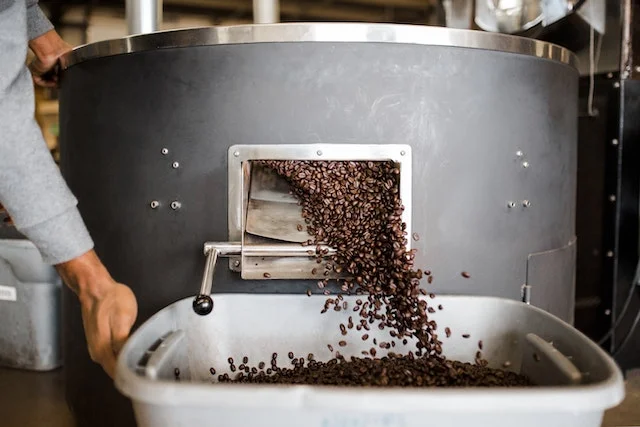
What Should Go In A Drag Chain Conveyor
Drag chain conveyors are ideal for conveying dry, cold, and hot (up to 180°F/82°C) powders and granules. They are particularly suited for conveying fragile materials such as nuts, cereals, food ingredients, coffee beans, pet food, animal feed, and various chemicals and plastics.
Food Industry Materials
Non-cohesive dry powders and granules, coffee, pet food, nuts, cereal, hops, grains, recycled products, barley, cocoa, beans, coffee (ground and whole bean), grains and seeds, hops, oats (rolled), pepper, sodium bicarbonate, soybeans, tea, and wheat.
Other Food Industry Materials – Application and Layout Dependent
Artificial sweetener, cashews, cereal, cheese powder, cookie crumbs, crackers, fish food, flour (reg/wheat), frozen vegetables, fruit (dried), hard candy, jelly beans, malt, meal and nuts, oilseeds, peanuts, pet food/animal feed, powdered vitamins, rice (dry and puffed), snack foods, soup mix, spices, sugar beet pellets, and more.
Plastic and Rubber Industry Materials
Latex, PET, plastics, recycled plastics, and more.
Timber Industry Materials
Sawdust, wood chips, wood pellets, and more.
Recycling and Environmental Industry Materials
Recycled plastics and other re-processed materials are subject to product testing.
The List of Additional Materials
Bottle caps, buttons, detergent, granules, litter, pellets, polyurethane foam, sintered dust, soluble corn fiber, talcum powder, tobacco, urea, wax flakes, and more.
What Should Stay Out Of Drag Chain Conveyors
Sludges, slurries, and moist, cohesive materials are not recommended for this type of conveyor. These materials are better conveyed in a structural ultra-heavy-duty conveyor like our Dynaflow drag chain conveyor.
Metals, Mineral and Mining Industry Materials
Bentonite clay, brown coal, clay, coal, coke, dried Coal, graphite, limestone, and more.
Power Industry Materials
Bio-mass (torrefied), activated coal ash, ash, and other similar materials.
Drag Chain Conveyor Cleanability
These conveyors have crevice-free chain and disc assemblies. This stops material from getting stuck inside and, as a result, makes the conveyor easier to clean.
Non-sanitary Applications
This conveyor can be cleaned by dry scouring (running an abrasive product) or air purging. Scavenged dust is directed out through the discharge outlet(s). The conveyor can also be wet-washed (clean-in-place). The chain and disc assembly can be removed for cleaning and drying remotely.
Sanitary Applications
Food products are common applications requiring a very low microbial count. The chain can be removed for cleaning/drying remotely.
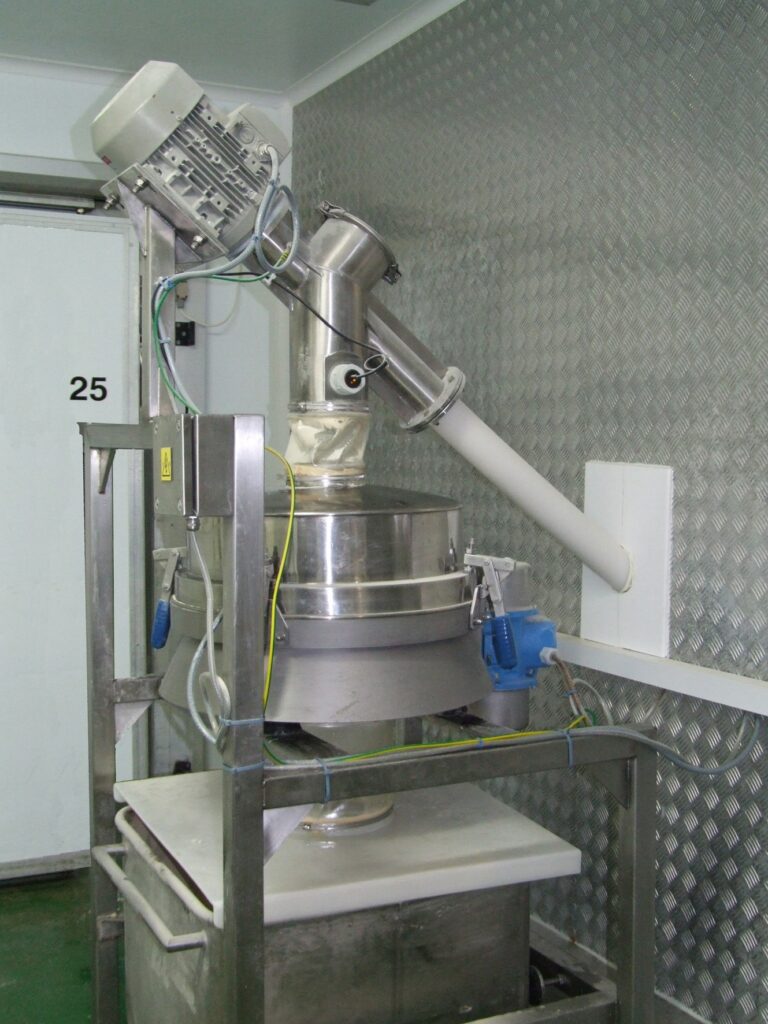
Other Conveying Options
When a non-structural drag chain conveyor isn’t the right choice to convey your material, there are other options. Based on your application requirements, those alternative solutions might include ultra-heavy duty structural drag chain conveyors, tubular cable drag conveyors, aero mechanical conveyors, or flexible screw conveyors.
Test, Test, Test!
If you are considering a tubular drag chain conveyor or really any other conveyor belt solutions, we always recommend material testing in one of our test labs. There are literally hundreds of materials that can successfully be conveyed in a tubular drag chain conveyor. Some suppliers will furnish a list of ‘can do’ materials, but we always prefer to err on the side of caution. That is why we reference many materials as ‘application dependent.’ This ensures that you receive a conveying solution that meets all of your requirements. It also prevents problems down the road.
Contact the Best Conveyor Systems Manufacturers for More Information
We don’t just make drag chain conveyors, so feel free to check out our complete product line. We also offer complete control systems integration services. Don’t hesitate to contact us for more information. We have been in the bulk material handling industry for more than 45 years, and we’ll do everything we can to help you determine the right bulk material handling solution for your process.

